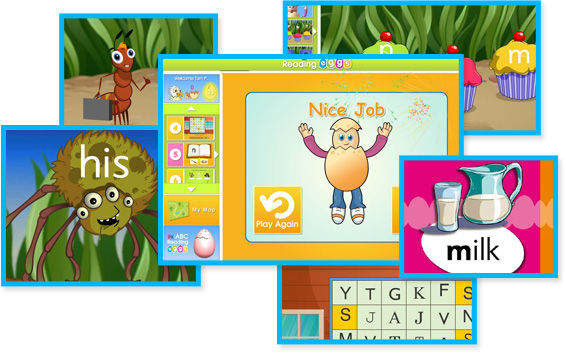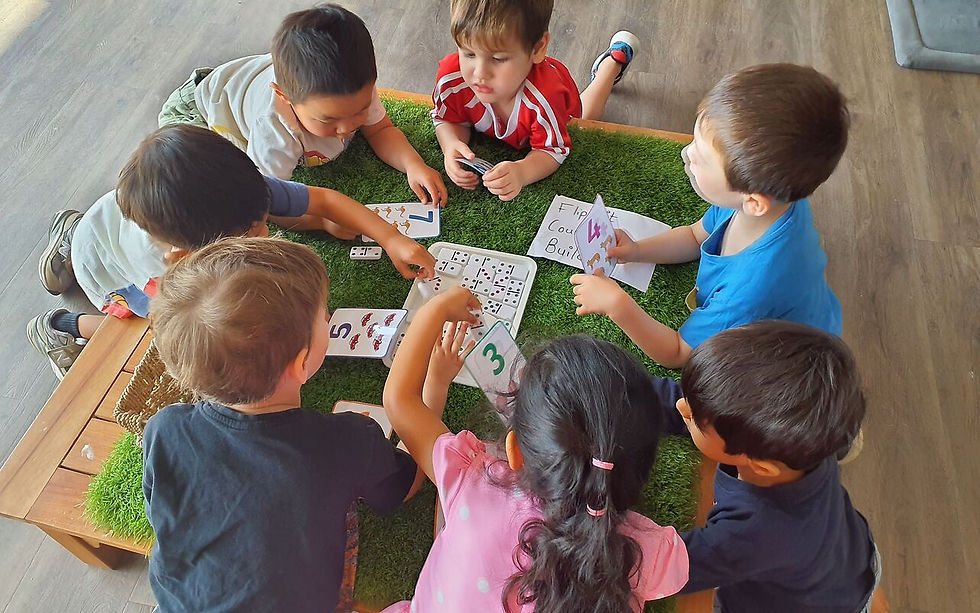Enhancing Preschool Learning with Educational Apps: A Balanced Approach
- Discover My World

- Jul 15
- 4 min read
In today’s digital age, screens are a part of everyday life—and that includes our little ones. While nothing replaces the magic of hands-on learning through play, we also need to acknowledge that children are spending more time on screens than ever before. So, why not make that screen time meaningful? Rather than endless scrolling through videos and clips, we can guide children toward interactive, educational experiences that spark curiosity and build essential skills.

A Balanced Approach to Learning
At Discover My World, we firmly believe that real-world play, social connection, and exploration are at the heart of every child’s learning journey. But when used with intention and balance, educational apps can be powerful tools to support early literacy and numeracy development. Think of it not as a replacement, but as a complement to the wonderful learning already happening through play.
Ways to Use Devices Meaningfully at Home or in Care
Instead of scrolling endlessly through clips or videos, try these purposeful ways to use screen time:
Research something together: Curious about rainbows, volcanoes, or space? Look it up together and talk about it afterwards.
Learn a new skill: Use video tutorials to explore early drawing, yoga, sign language, or music.
Reinforce what’s being learned in care: Match an app to what your child is exploring—like phonics, counting, or storytelling.
Create, not just consume: Try apps that let children record their own stories, build digital art, or solve puzzles with logic.
Here are five educational apps we love, all available for download in Australia, that help make screen time a little more purposeful:
1. Jolly Phonics
Focus: Literacy (phonics, letter sounds, early reading)
Jolly Phonics is a research-backed, multi-sensory phonics program that introduces preschoolers to the 42 main sounds of English through fun stories, songs, actions, and interactive games. The app supports early reading and writing skills with a structured, synthetic phonics approach—perfect for building strong foundations in literacy.
Multi-sensory: combines sound, movement, and visuals
Progress tracking available for parents and educators
Choose Australian, British, or American accents
Available on iOS and Android. Some features are free; full access via in-app purchases.
2. Khan Academy Kids
Focus: Literacy, numeracy, and emotional development
This free app offers a wide range of engaging activities, including stories, songs, puzzles, and early math games. It’s perfect for children aged 2 to 8 and is designed by education experts to support a love of lifelong learning.
Personalised learning paths
Ad-free and completely free to use
Covers reading, writing, numeracy, and more
Free on iOS and Android.
3. ABC Reading Eggs
Focus: Literacy (phonics, sight words, reading comprehension)
A favourite among Aussie families, Reading Eggs uses games, songs, and reward systems to teach children to read. It’s tailored to your child’s level and grows with them as their confidence builds.
3,000+ levelled readers
Engaging phonics games
Easy for parents to monitor progress
Subscription-based, available on iOS, Android, and web.

4. Mathseeds
Focus: Numeracy (number recognition, counting, operations)
Created by the same team behind Reading Eggs, Mathseeds is full of fun and colourful activities that build core math skills for children aged 3 to 9. Each lesson is interactive and designed to keep little minds engaged.
Covers early math concepts in fun, short lessons
Motivational rewards and certificates
Great for independent or guided use
Subscription-based, available on iOS, Android, and web.
5. Endless Alphabet
Focus: Vocabulary, phonics, and word recognition
This quirky app brings words to life with silly monsters and animated puzzles. As children drag letters into place, the app sounds them out and builds vocabulary in a fun, non-intimidating way.
Engaging, non-competitive format
Ideal for pre-readers and early readers
Builds confidence in letter recognition and word understanding
Available for purchase on iOS and Android.
How Much Screen Time is OK?
According to the Australian 24-Hour Movement Guidelines:
For children aged 2 to 5: no more than 1 hour of sedentary screen time per day.
For children under 2: screen time is not recommended, except for video calls.
But not all screen time is created equal—what matters most is what they’re doing, who they’re doing it with, and how they engage with it.
Learn more:
Did You Know? You Can Set Parental Controls!
Worried about how much screen time your child is having or what they’re watching? You can set controls on your devices to help manage this. These tools let you:
Set time limits for certain apps
Schedule "downtime" where devices lock automatically
Block inappropriate content or restrict app types
Here’s how to start:
For iPhones/iPads (Apple Screen Time):
Go to Settings > Screen Time
Tap Turn On Screen Time, then Set Up as Parent
Use Downtime, App Limits, and Content Restrictions as needed Apple Screen Time Guide
For Android Devices:
Use Google Family Link to create a child account
Set screen time limits, block apps, and view activity Google Family Link Info Google Family Link
For Smart TVs or YouTube:
Set up YouTube Kids and enable content filters YouTube Kids Info YouTube For Families Help
Final Thoughts
Children learn best through play, curiosity, and connection—and that will never change. But if your child is going to be spending time on a screen, let’s make it count. These educational apps offer enriching, interactive ways to reinforce literacy and numeracy skills, all while keeping learning joyful and fun.
So next time your preschooler reaches for the iPad, you might just find them exploring letter sounds, counting objects, or solving their first math puzzle—one tap at a time.






Comments